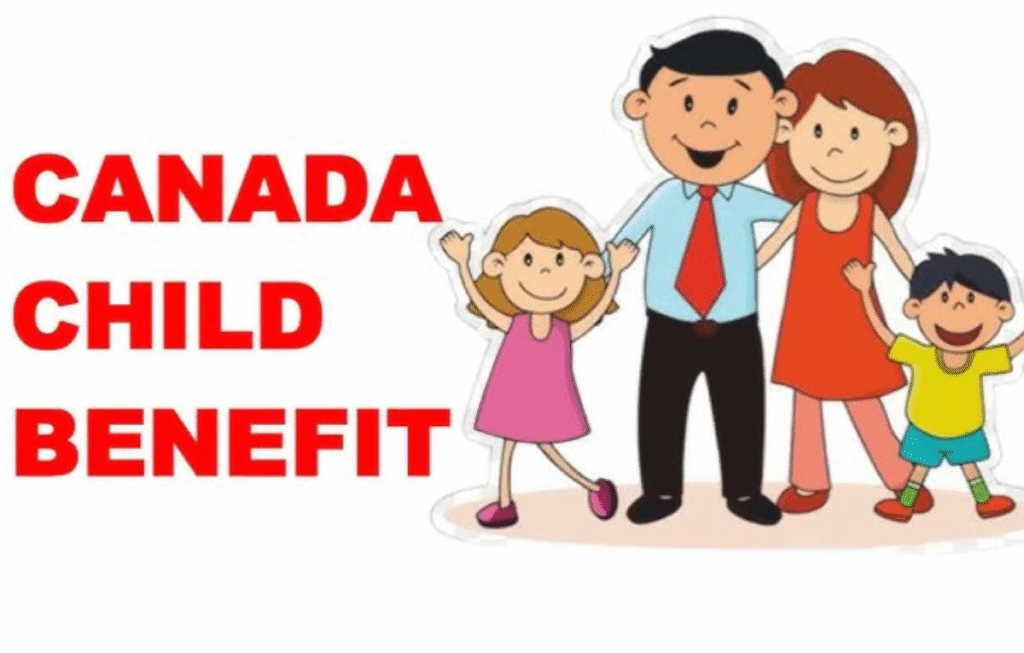Every year, the Canadian government adjusts its support measures for families, and for the 2025–2026 benefit period, the Canada Child Benefit (CCB) sees important changes. One of the standout updates is the maximum benefit for young children—namely, under-6 children can receive up to $7,997 per year under current rules.
In this article, we’ll cover:
- What the Canada Child Benefit is
- Who qualifies for it in 2025
- How much you can receive (and how it’s calculated)
- How to apply online (and via other methods)
- Tips, timelines, and common issues
What Is the Canada Child Benefit (CCB)?

The Canada Child Benefit (CCB) is a tax-free monthly payment provided by the Canada Revenue Agency (CRA) to help eligible families with the cost of raising children under the age of 18.
It replaces earlier, more fragmented child benefit programs, consolidating supports into one benefit that is income-tested and automatically adjusted based on family income and the number and age of children. Because it is tax-free, the CCB does not need to be declared as income on your tax return.
Updated Benefit Amounts for 2025
One of the headline changes for 2025 is the higher maximum benefit for younger children. For the benefit year July 2025 to June 2026:
- For each child under age 6, eligible families may receive up to $7,997 per year.
- For children aged 6 through 17, the maximum is $6,748 per year.
These maximums apply to families whose adjusted family net income (AFNI) is low enough to qualify for full payment. As income increases above thresholds, the benefit is gradually clawed back.
Payments are made monthly, typically around the 20th of each month (or earlier if the normal date falls on a weekend or holiday).
Who Qualifies for the Canada Child Benefit in 2025?
To receive the CCB, you must meet all the following basic eligibility criteria. These are the core rules, though specific situations (shared custody, newcomers, etc.) have nuances.
1. Child Must Be Under 18 and Live with You
- The child must be under age 18.
- The child must live with you (in your care) for at least part of the time.
2. You Must Be the Primary Caregiver
You must be the person primarily responsible for the care and upbringing of the child. This means you handle their day-to-day needs, medical care, school arrangements, etc.
In cases of shared custody, both parents could receive a portion of the benefit based on how much time the child spends with each.
3. You Must Be a Canadian Resident for Tax Purposes
You must be considered a resident of Canada for tax purposes.
Your or your spouse/common-law partner (if applicable) must also hold one of the following statuses:
- Canadian citizen
- Permanent resident
- Protected person (e.g., refugee)
- Temporary resident who has lived in Canada continuously for the previous 18 months and holds a valid permit in the 19th month.
- Registered under or entitled to be registered under the Indian Act
If the 18-month residency requirement is not yet satisfied, your application will still register your child for the GST/HST credit and related programs, but not full CCB until criteria are met.
4. You (and Your Partner) Must File Taxes Annually
To receive or continue receiving the CCB, you and (if applicable) your spouse/common-law partner must file an annual tax return, even if your income is zero.
How Is the Benefit Amount Calculated?
Your adjusted family net income (AFNI) from the previous tax year is the key figure used to determine how much CCB you get. If your AFNI is below certain thresholds, you may receive the full maximum benefit.
Once your income exceeds the threshold (for example, $37,487), the benefit is reduced according to a formula: generally a percentage reduction (e.g. 7%) of income above the threshold is subtracted from the maximum.
For example, if you have one child under 6, and your AFNI is $40,000:
- Income above threshold = $40,000 – $37,487 = $2,513
- Benefit reduction = 7% of $2,513 = $175.91
- Maximum benefit = $7,997
- Net benefit ≈ $7,997 – $175.91 = ~$7,821.09 (annual)
If your income is much higher, additional claw back rules or higher reduction rates may apply.
Also note: the age of children matters. The rate for children under 6 is higher than for children aged 6–17.
How to Apply for the Canada Child Benefit (Online & Other Methods)

Applying for the CCB is relatively straightforward. Here’s how you can do it:
Method 1: Apply When Registering a Child’s Birth
Many provinces allow you to apply for the CCB at the time you register your child’s birth. If you consent for CRA to receive that information, you may skip a separate application.
Method 2: Apply Online via CRA My Account
This is the fastest and most convenient method:
- Sign in or register for CRA My Account (Canada Revenue Agency’s portal).
- Go to “Benefits and Credits” → “Child Information” → Add a Child.
- Provide your personal details, child’s details, and supporting documents.
- Submit your application.
- The CRA will process it, and your first payment may include any retroactive amounts from the eligibility date.
Expect processing within 8 weeks if all information is correct.
Method 3: Apply by Mail (Form RC66)
If you prefer or cannot apply online:
- Complete Form RC66 (Canada Child Benefits Application).
- Attach required documents (birth certificate, immigration status, proof of address, custodial or caregiving proof, etc.).
- Mail it to your CRA tax center.
Processing can take 8 to 11 weeks by mail.
What Documents Are Needed?
When applying (especially by mail), you’ll need to provide supporting documents such as:
- Child’s birth certificate or equivalent proof
- Proof of your residency in Canada (utility bills, lease, driver’s licence)
- Documentation of immigration or citizenship status (PR card, visa, protected person status, etc.)
- Custody or care documentation if required (court orders, school records, letters from daycare)
- If applying retroactively, proof for the periods claimed
If your documents are not in English or French, they must be translated with certified translation.
Timing, Payment Dates & Retroactive Coverage
- The benefit year runs from July 1 to June 30.
- Payments are made monthly, approximately on the 20th of each month, or earlier if that date falls on a weekend or holiday.
- If you apply late, you may be eligible for retroactive payments, but only up to 11 months prior to the application.
- If a child turns 6, their benefit rate switches from the “under 6” rate to the “6–17” rate in the month after their birthday.
Special Situations & Exceptions
Shared Custody
If a child lives with you part-time (roughly 40–60%), both parents may receive a share of the benefit proportional to time spent.
Children in Kinship Care or Close Relationship Programs
You may still claim CCB if you care for a child under a kinship or close relationship program, provided no “Children’s Special Allowances” are payable for that child.
Temporary Residents & Newcomers
A temporary resident can qualify if they’ve lived in Canada continuously for 18 months and hold a valid permit for the 19th month (not marked “does not confer status”).
New permanent residents are eligible from the month after arrival. Retroactive payments may be possible.
Tips to Maximize & Maintain Your Benefit

- File your taxes on time every year. If you don’t, CRA won’t recalculate your benefits.
Canada.ca - Keep your personal information updated: marital status, number of children, address, banking info, etc.
- Choose direct deposit for faster payments and fewer delays.
- Apply early to avoid missing out on retroactive payments.
- If your child qualifies for disability tax credit, you may also get an additional Child Disability Benefit.
Conclusion
Suppose you have one child under 6, and your AFNI (adjusted family net income) is $50,000.
- Maximum benefit = $7,997 (for under-6)
- Threshold = $37,487
- Income over = $12,513
- Reduction = 7% × $12,513 = $875.91
- Net benefit = $7,997 – $875.91 = $7,121.09 per year
- Monthly payment ≈ $593.42
Of course, actual payment may vary based on siblings, additional claw back rules, or provincial top-ups.
FAQs:-
What is the Canada Child Benefit (CCB) 2025?
The Canada Child Benefit 2025 is a tax-free monthly payment provided by the Canadian government to help families raise children under 18.
Who qualifies for the $7,997 Canada Child Benefit?
You must be a Canadian resident, be primarily responsible for the child’s care, and meet the income and age requirements set by the CRA.
What documents are needed to apply for the CCB 2025?
You’ll need your Social Insurance Number (SIN), your child’s birth certificate, and proof of Canadian residency.
